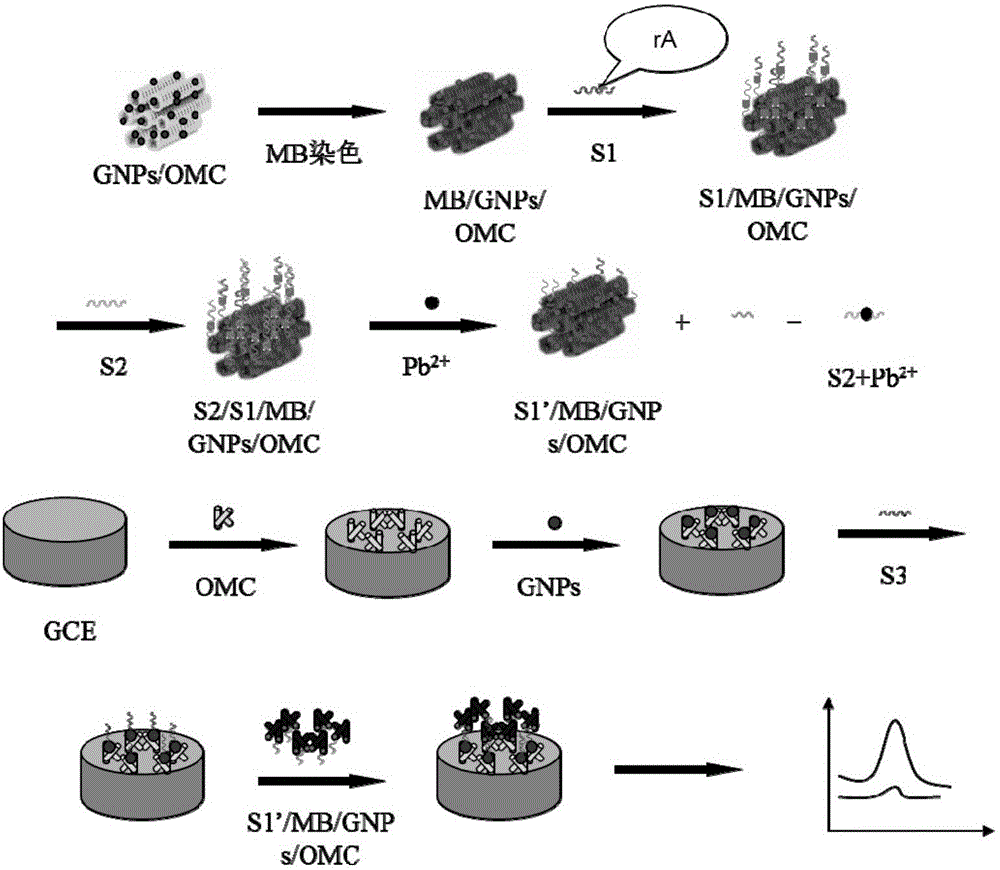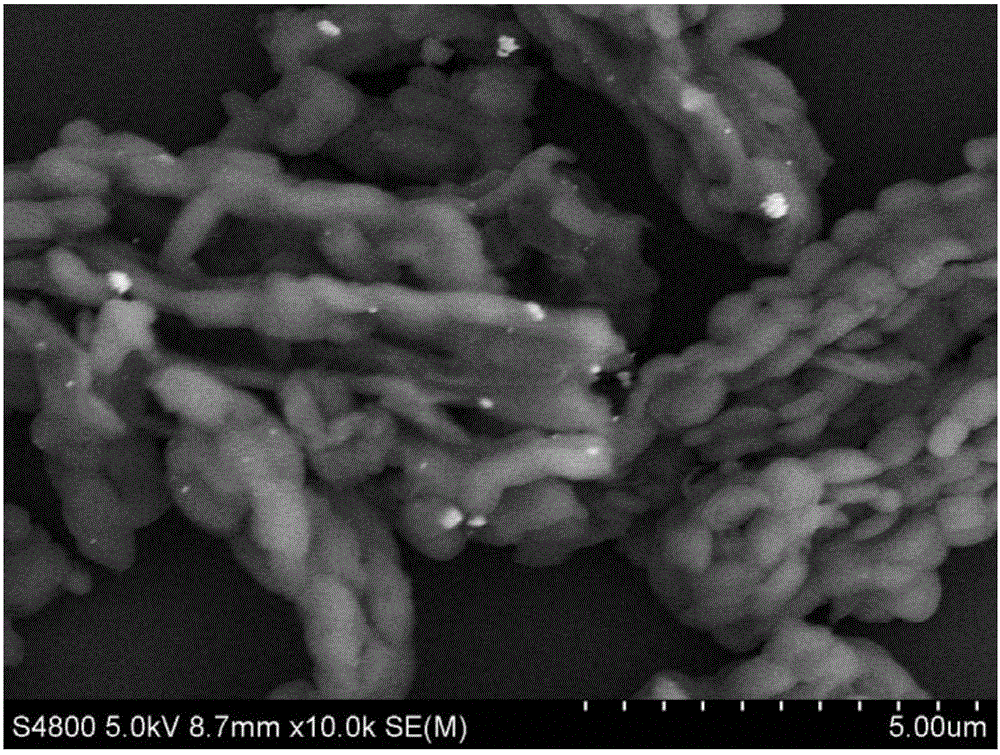Electrochemical sensor for detecting lead and preparation method and application of electrochemical sensor
An electrochemical and sensor technology, applied in the field of electrochemical sensors for detecting lead and its preparation, can solve problems such as unstable fixation, easy use of environmentally harmful substances, and influence on DNA activity, so as to improve efficiency and sensitivity, improve The effect of sensitivity and good affinity
- Summary
- Abstract
- Description
- Claims
- Application Information
AI Technical Summary
Problems solved by technology
Method used
Image
Examples
Embodiment 1
[0046] see figure 1 , an electrochemical sensor for detecting lead ions, comprising a glassy carbon electrode used as a working electrode in a three-electrode system, a signal amplification device, a response probe and a target probe.
[0047] Wherein, the surface of the detection end of the glassy carbon electrode is modified with ordered mesoporous carbon, nano gold particles are deposited on the ordered mesoporous carbon, and thiol-modified capture probes are connected to the nano gold particles.
[0048] The signal amplifying device includes ordered mesoporous carbon loaded with nano gold particles, and methylene blue is adsorbed on the ordered mesoporous carbon deposited with nano gold particles.
[0049] The response probe is modified on the signal amplification device through sulfhydryl group, and the nucleotide sequence of the response probe is the nucleotide sequence of deoxyribonucleic acid and nucleotide adenosine chimera. The desalted ribonucleic acid in the respo...
Embodiment 2
[0060] A preparation method of the electrochemical sensor of embodiment 1, specifically comprises the following steps:
[0061] 1. Preparation of ordered mesoporous carbon:
[0062] 1.1, the synthesis of mesoporous silicon template SBA-15: 8.0g block copolymer PluronicP123 is placed in hydrochloric acid solution (hydrochloric acid solution is made of 270g H 2 O and 320mL, 1.54M hydrochloric acid), stirred in a 35°C water bath (the water bath temperature can be 30-35°C) until P123 dissolved, and then added 17g of tetraethyl orthosilicate (TEOS) dropwise , stirred at 35°C for 20h to obtain a mixed solution; transferred the mixed solution to a reaction kettle, heated it in a water bath at a temperature of 140°C for 24h (the water bath temperature can be 140°C to 150°C), and then carried out suction filtration to obtain the filtrate. The filtrate was washed with distilled water until neutral, and dried to obtain a white powder. Put the white powder into a box-type resistance fur...
Embodiment 3
[0079] The application of the electrochemical sensor of embodiment 1 in detecting lead ion, concrete detection method specifically comprises the following steps:
[0080] (1) Prepare the response probe and the signal amplification device into a solution with a response probe concentration of 2 μM, overnight at 4°C, centrifuge to remove the unadsorbed response probe, and redisperse to obtain the signal amplification modified by the response probe device.
[0081] (2) According to the volume ratio of 1:1, take the target probe with a concentration of 2 μM and react with the signal amplification device modified by the response probe modified by the sulfhydryl group obtained in step (1) for 30 minutes (reaction time can be implemented if the reaction time is 10 to 50 minutes) ), the signal amplifying device (S2 / S1 / MB / GNPs / OMC) modified by DNA double strands is obtained.
[0082] (3) Add the lead-containing solution to be tested to the signal amplification device obtained in step ...
PUM
 Login to View More
Login to View More Abstract
Description
Claims
Application Information
 Login to View More
Login to View More - R&D
- Intellectual Property
- Life Sciences
- Materials
- Tech Scout
- Unparalleled Data Quality
- Higher Quality Content
- 60% Fewer Hallucinations
Browse by: Latest US Patents, China's latest patents, Technical Efficacy Thesaurus, Application Domain, Technology Topic, Popular Technical Reports.
© 2025 PatSnap. All rights reserved.Legal|Privacy policy|Modern Slavery Act Transparency Statement|Sitemap|About US| Contact US: help@patsnap.com



